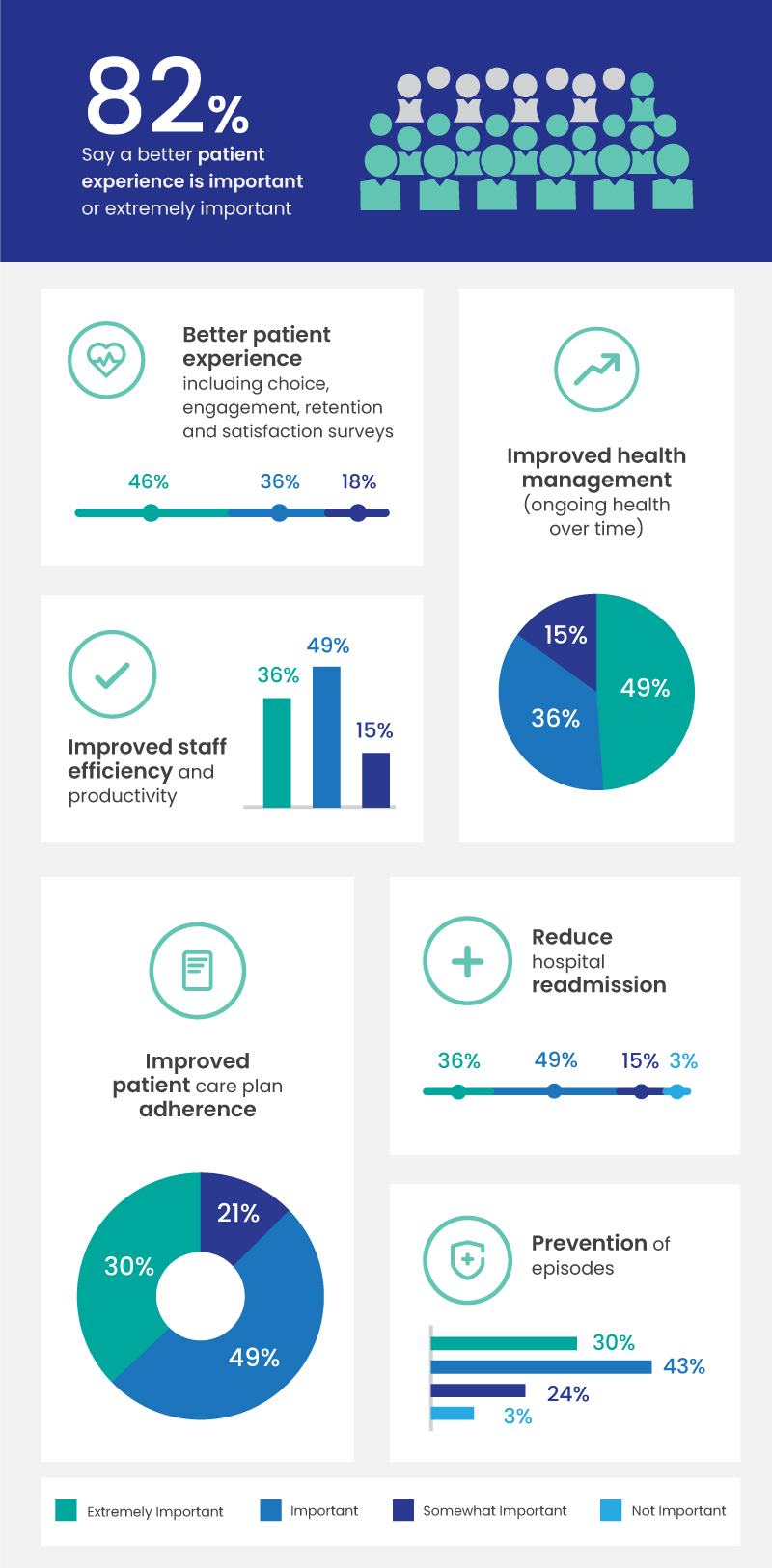Patient Engagement Strategies
3 Patient Engagement Strategies to Transform Health Economics

Blog
3 Patient Engagement Strategies to Transform Health Economics

Healthcare expenses in recent decades have seen rapid growth, outpacing the overall economic growth.
T he economics of health care needs to be reimagined and for the benefit of patients, various factors are fostering this change. Healthcare expenses in recent decades have seen rapid growth, outpacing the overall economic growth. The U.S healthcare spending in 2019 was at $3.6 trillion or $11,172 per person, growing at a CAGR of 4.6 percent, according to the Centers for Medicare and Medicaid Services (CMS).
What’s more pressing is that the traditionally accepted health economics in the U.S have not been very patient-friendly—and have been quite contrary to what should have ideally been the primary goal of providers: patients’ health. From time immemorial, if a patient checked out of the hospital the previous week and returned the next week with the same issue, it resulted in positive outcomes to the hospital’s bottom line—even though this could be a result of ineffective treatment of the provider. Likewise, if a patient contracted an infection at the hospital and had to prolong the stay for an extra four days, the hospital still was at a financial gain and not at a loss. Simply put, health economics did not take a call on decreasing such incidents from doctors and nurses.
As part of the Affordable Care Act (ACA), changing healthcare regulations have changed this scenario in an intensive push from the fee-for-service model to value-based care model. This is a game-changer in patient-centric healthcare—as value-based care ensures that providers get paid only when they have improved patient outcomes.
For instance, ACA states that hospitals are not eligible for payment—from readmissions that happen within 30 days of discharge for the same issue that the patient was initially admitted for. These changing regulations and value-based healthcare models illustrate the increasing importance of patient engagement and experience in improving overall health economics.

With patient-centric healthcare and evolving regulatory measures, how can healthcare providers enhance patient engagement strategies to drive up healthcare economics?
Deploying the right technologies is one of the key steps to superior patient engagement. Identify a patient engagement platform that will cohesively operate with your organization’s workflow. Some of the core capabilities of the best patient engagement solutions include—a cross-functional platform that encapsulates patient registration, appointment reminders, and Telehealth solutions among the others. These are amongst the key technologies that directly impact the financial outcomes of a hospital or medical practice. For instance, appointment reminders are reported to reduce no-shows and accelerate the ROI of practices drastically. A recent poll conducted by the Medical Group Management Association (MGMA) revealed that “Higher revenues” is the topmost benefit achieved by healthcare organizations that used automated appointment reminders.
Over 90% of patient engagement happens outside the hospital walls. Despite the Electronic Health Records (EHR), patient information collected directly from patients is reported to be of high importance and value. Remote Patient Monitoring solutions offer exceptional capabilities in tracking, monitoring and transmitting real-time patient data—expanding the opportunities to deliver superior care. Virtual care solutions and telemedicine platforms, especially in the current COVID-19 scenario, have revolutionized patient management by enabling care providers to optimize patient flow and help recapture the billable time.During these uncertain times, virtual care solutions help mitigate financial risks and ensure that providers keep their revenues intact.
Patient engagement on a consistent and continuous basis is a task impossible for even the largest of the healthcare organizations—if they stick to legacy systems and manual processes. Physicians have a busy work schedule that makes it even more challenging for them to track and monitor their patients at a personalized level. Care coordinators are expensive and have limitations with the number of patients they can coordinate and collaborate with. Automated patient engagement is a simple solution to some of the complex patient engagement challenges. AI-powered patient engagement solutions help providers automate some of the mundane and repetitive tasksenabling them to—reduce Operational Expenses (OPEX), mitigate revenue leakage and ultimatelyboost the bottom line.
SolvEdge is a seasoned healthcare services and solutions provider with 16+ years of experience in delivering seamless patient engagement solutions that foster lasting customer relationships. Our comprehensive care coordination solutions include—telemedicine, post-surgical care coordination, chronic disease management, and others—enabling providers to enhance patient engagement, reduce readmissions, reduce no-shows and essentially improve outcomes and the economics of healthcare. By partnering with SolvEdge, our customers have seen significant revenue growth—enabled by our profound healthcare experience, proven strategies, industry best practices and tailored solutions to our clients’ specific business needs.
To bring SolvEdge to your organization, please call us at +1- (833) 33- SOLVE / email at business@solvedge.com
From our humble beginnings as a healthcare start-up—to becoming a full-blown healthcare-exclusive digital transformation provider, our journey has been quite a remarkable one. Today, SolvEdge is a leading-edge Healthcare services and solutions provider—trusted by 450+ Hospitals, 3500+ Physicians and millions of patients across the globe.